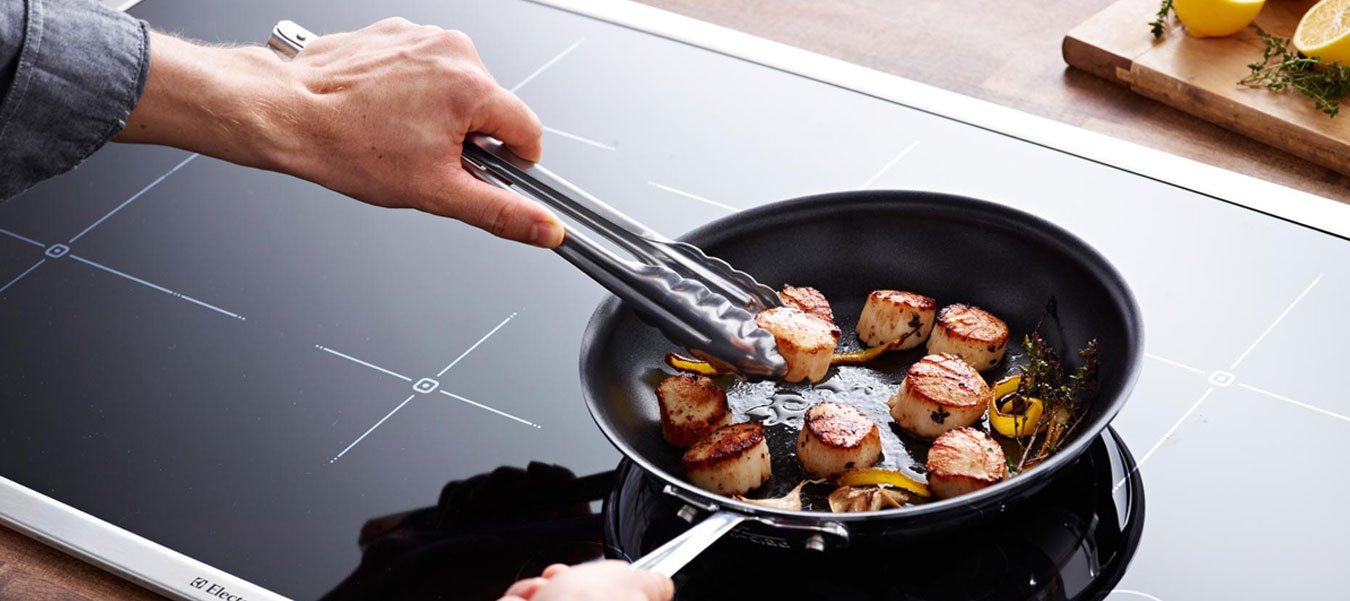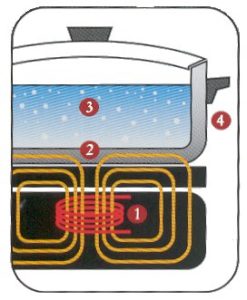What Is Induction Cooking?

British science fiction writer Arthur C. Clarke once wrote that any sufficiently advanced technology is indistinguishable from magic. That rings true, doesn’t it? We live in a world filled with fantastic technology, and sometimes it feels a bit like magic in the way it works. A great example of the magic of advanced technology in the foodservice industry is Induction Cooking.
In fact, you can do things that look like magic with Induction Cooking. For example, you could put a piece of newspaper on top of an induction stove-top, put a pot of water on top of the newspaper, and bring the water to boil all without burning or singeing the newspaper. You can even put your hand right on the burner after removing the pot and it wont be hot. Sounds like magic, right? Well, it’s not magic. It’s just science. Awesome science.
So what is induction cooking, exactly?
There really is no “simple” way to fully explain what induction cooking is and how it works. Induction cooking is a highly scientific process, and incredibly complicated to explain in detail. However, when you break it down to the most basic components it can be understood. The traditional method of cooking that we are all used to seeing and using in our kitchens involves a traditional pot or pan over an open flame. This method of heating is called thermal conduction,. and it involves the transfer of heat from your heat source to your pan in order to heat your food. Induction Cooking instead completely foregoes the traditional method of transferring heat to the pan and instead turns the pan itself into the source of heat.
How does it do this? Through a process called Magnetic Induction. This means that, through complicated physics and the use of electromagnetic fields, heat actually generated inside the pan instead of being transferred from another outside source like an open flame or an electric coil. That’s how you could heat the pan, and the water inside if out, without burning the newspaper sitting between them. The newspaper isn’t heated by the magnetic field created by the induction cooker, only the pan is. See, not magic after all.
Here’s a closer look:
 The element’s electronics power a coil (the red lines) that produces a high-frequency electromagnetic field (represented by the orange lines).
The element’s electronics power a coil (the red lines) that produces a high-frequency electromagnetic field (represented by the orange lines).
That field penetrates the metal of the ferrous (magnetic-material) cooking vessel and sets up a circulating electric current, which generates heat. (But see the note below.)
The heat generated in the cooking vessel is transferred to the vessel’s contents.
Nothing outside the vessel is affected by the field—as soon as the vessel is removed from the element, or the element turned off, heat generation stops.
“Okay,” you might be asking yourself. “All that sounds super fancy, but what good is that to me? Why would I use induction in my kitchen rather than a traditional gas stove?”
Great question hypothetical blog reader! There are a number of incredible benefits to making the switch to induction cooking.
1) IT IS FASTER
Because heat is created directly inside the pan, induction cooking is a lot faster and a lot more responsive than traditional gas or electric stove tops. How much faster? Well, in one test it was actually twice as fast at boiling water than a traditional gas stove. Making the switch to induction cooking will save you or your cooks a lot of time in the kitchen, which means your customers get served that much faster. Time is money everywhere, but this is especially true in a busy restaurant. Cutting down on cook-time will make your entire kitchen more efficient.
2) IT IS SAFER.
Because of the nature of induction cooking, the only thing that gets hot in the process is the pan being used for cooking. This means no open flame, no hot electric coils, and just a lot fewer opportunities for getting burned. No open flame also means a lot less change of a fire, which is something no one wants in their business.
3) IT IS CLEANER
Induction surfaces don’t have any grates that catch grease. You can simply wipe up any spills immediately after they happen because the surface doesn’t actually get hot. Not having to deal with the gas burning stove and the caked on grease that comes with it makes everything on your stove last a lot longer.
4) IT IS MORE EFFICIENT.
We don’t just mean that it’s faster, we also mean that it is more energy efficient. When you’re cooking with a gas stove a lot of heat is lost to the air. An open flame doesn’t only heat your pan, it heats everything around it. Because of this, it’s estimated that about 50% of the energy used in gas cooking is lost. By comparison, induction cooking is about 85-95% efficient. Hardly any ambient energy is lost in the process. This will save you big time on your energy bills.
The one and only downside to induction cooking is that it requires a certain kind of cookware. Because of the use of electromagnetic energy, not all kinds of pots and pans will work. Glass, for example, wont be heated through magnetic induction, and is therefore incompatible with induction stove tops. Copper and Aluminum also won’t work. Your best bet is to use cast iron or check to see if your cookware says “induction ready” on it. A simple test you can use is that if a simple refrigerator magnet sticks to your pot or pan, it can be used for induction cooking.
Got any questions about induction cooking? Reach out to your sales person! You can also connect with us onFacebook, Twitter, LinkedIn, Instagram, or Google+.
NEED HELP WITH THIS?
Get immediate help with this topic from a certified PJP Product Specialist.
Typical response within 24 hours.

